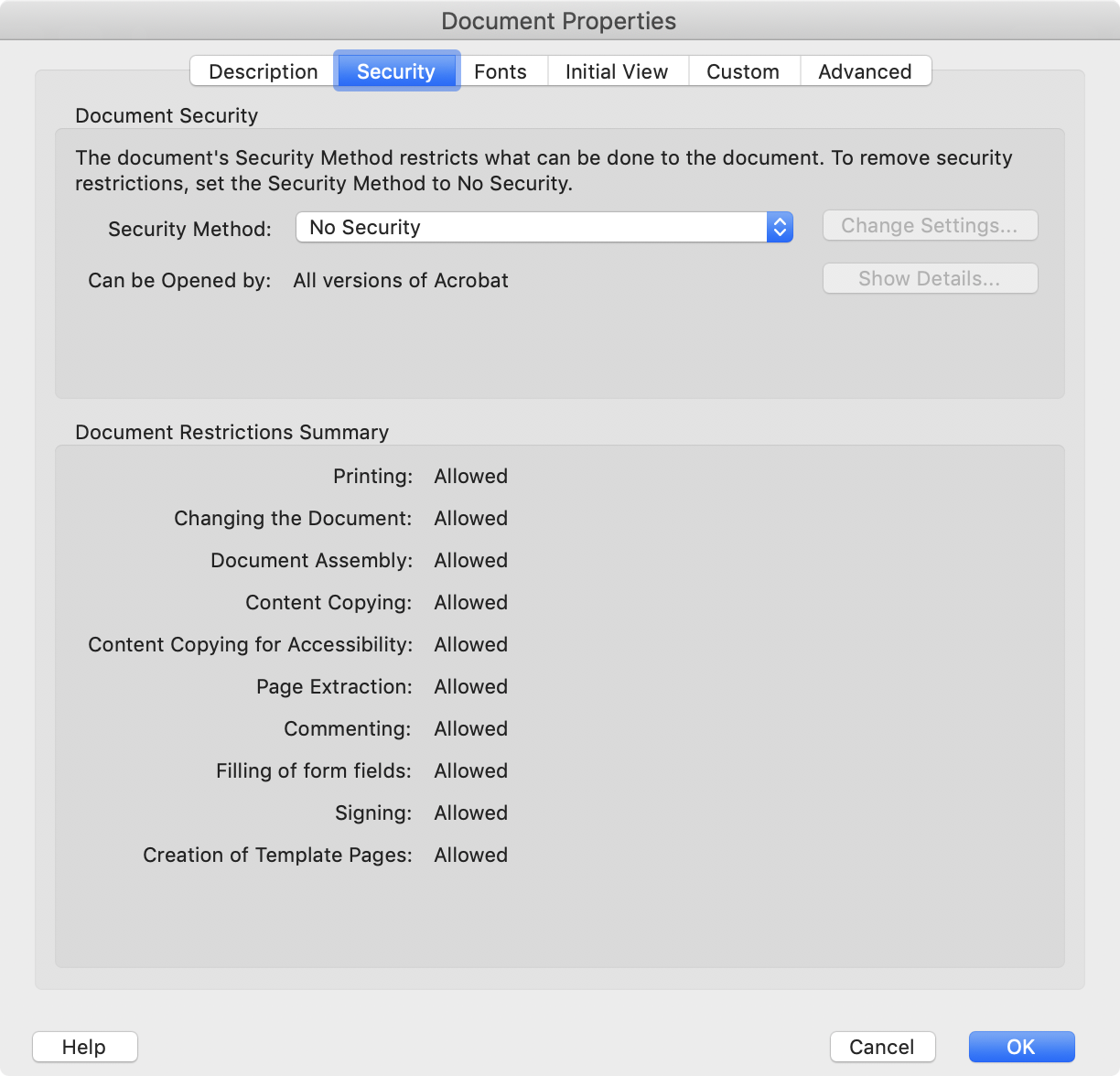Enable or Disable Permissions in Our JavaScript Viewer
The PDF specification defines a series of flags that can be set on a document to determine what a user can do with a document. These permissions are represented as a bitmask at the PDF level. When a permission bit isn’t present at its defined position, the permission is considered not granted.
Nutrient honors the permissions set on a document and enables or disables certain platform features based on the permission configuration. For instance, if a PDF doesn’t explicitly define the printing permission as loaded, Nutrient won’t enable the printing option in the UI.
The PDF specification defines the permissions shown below.
-
Printing: Print the document.
-
High-quality printing: Print the document in high fidelity.
-
Copying content: Copy or otherwise extract text and graphics from the document.
-
Document assembly: Insert, rotate, or delete pages and create document outline items or thumbnail images.
-
Editing annotations and forms: Add or modify text annotations and fill in interactive form fields.
-
Filling forms: Fill in existing interactive form fields (including signature fields).
-
Modifying content: Any other modifications not covered by previous permission flags.
By default, most documents will have all permissions marked as granted.

Nutrient has support for the above permissions on a per-platform basis. This is ongoing work, and support for more permissions is being worked on to reach feature parity across platforms.
The permissions will be honored when the document is unlocked with a user password (in case there’s one). Note that a PDF document can have both an owner password and a user password (read more). We recommend not using the same value for both the owner and user password.
If you use Nutrient Web SDK with Document Engine, you can restrict the permissions of a document in the JSON Web Token (JWT) used for authentication.
Be aware that restricted document permissions set in a PDF itself or in the JWT cannot be overwritten.
Below you’ll find a detailed breakdown of the permissions that can be set.
Printing and high-quality printing
These permissions can be edited via the JavaScript API, and high-quality printing is enabled by default. When high-quality printing is enabled, a document will print with a resolution of 300 DPI; otherwise, 150 DPI will be used.
Be aware that high-quality printing uses more resources than low-quality printing, and this might affect the performance while printing.
Setting the high-quality printing permission will only have an effect if the print mode is set to PSPDFKit.PrintMode.DOM. If you want to print a document in lower quality, you can set the Configuration.disableHighQualityPrinting configuration value to true.
Text extraction
When this permission isn’t given, users aren’t allowed to select text in a document. This permission is granted by default, but it can be disabled by setting the Configuration.disableTextSelection configuration value to true.
Document assembling
This permission is currently not honored by Nutrient Web SDK.
Forms and annotations
When this permission is disabled, users aren’t allowed to fill out forms. This permission is granted by default, but it can be disabled by setting the Configuration.disableForms configuration value to true. Disabling the default permission doesn’t affect the original file; instead, it affects how the final user can interact with the document.
Content modification
This permission specifies whether or not modifying a document is allowed. Modification is allowed by default, but it can be disabled using the Instance#setViewState function:
instance.setViewState(v => v.set("readOnly", true));
instance.setViewState(function(v) { return v.set("readOnly", true); });
Disabling the default permission doesn’t affect the original file; instead, it affects how the final user can interact with the document.
Getting and Setting Permissions
Modifying document permissions using Nutrient Web SDK isn’t possible at this moment, but you can configure your instance to ignore all the permissions set on the document by setting the IGNORE_DOCUMENT_PERMISSIONS flag. This setting only affects the Nutrient instance, and the document won’t be modified in any way.